How to Organize Your Closet on Nearly Any Budget
Closets (including dressers) are hardworking spaces in most homes. Since they’re usually out of public view, they often become multipurpose storage spaces for a host of items. Sometimes that’s what’s necessary and sometimes it’s just that the closet has morphed into the default spot for this or that. If your closet spaces are in need of an overhaul or general organization, read on to find out ways to achieve your goals on any budget.
Before You Start
Envision your space. What’s your ideal purpose for the closet? Do you want it to contain just your clothing and accessories? Will it need to include other categories of belongings?
Once you’ve decided which categories will stay in your closet, remove the things that don’t belong and find new homes for them. What does and doesn’t belong is subjective and based on your personal goals for your closet. Therefore, invest the time to plan a closet that will work for you.
Envision your space. What’s your ideal purpose for the closet? Do you want it to contain just your clothing and accessories? Will it need to include other categories of belongings?
Once you’ve decided which categories will stay in your closet, remove the things that don’t belong and find new homes for them. What does and doesn’t belong is subjective and based on your personal goals for your closet. Therefore, invest the time to plan a closet that will work for you.
Pare down. Review the items in each of the categories you’re keeping in your closet. Consider purging items that no longer fit or that you no longer love or need. Has any part of your lifestyle changed permanently since the pandemic? Are you working from home indefinitely? Are you back in the office part time? Has your work travel taken on a new format or frequency? Perhaps you may be able to shed some items that are no longer relevant.
Prioritize prime space. If your current closet doesn’t comfortably allow for year-round clothing storage, consider separating your clothing by seasons and storing off-season items in containers to be switched out as necessary. You can also store clothing for specific activities (such as skiing, dressing in costume, vacations) in separate containers to be stored in less prime spaces.
With your belongings pared down and categorized, consider your current space and where each category will go, prioritizing your most-used items for the most convenient spaces. From there, assess your budget to reach your desired organization goals.
With your belongings pared down and categorized, consider your current space and where each category will go, prioritizing your most-used items for the most convenient spaces. From there, assess your budget to reach your desired organization goals.
Basic Improvements
Containers for off-season items. I store seasonal and specific-use items in smaller, transparent containers with lids. I have a short ledge above my closet system that fits these containers perfectly. They’re still within view so I don’t forget they’re there, within relatively easy reach with a stepladder. They don’t hog any prime space in my main closet nor are they visually unattractive.
If you don’t have such spaces in your closet, off-season and activity-specific items can be stored in other places in your home that make sense. Examples to consider include the attic, garage or deep storage closets. Be sure to store your clothing in a way to keep out moisture, dust, mold, mildew and pests.
Containers for off-season items. I store seasonal and specific-use items in smaller, transparent containers with lids. I have a short ledge above my closet system that fits these containers perfectly. They’re still within view so I don’t forget they’re there, within relatively easy reach with a stepladder. They don’t hog any prime space in my main closet nor are they visually unattractive.
If you don’t have such spaces in your closet, off-season and activity-specific items can be stored in other places in your home that make sense. Examples to consider include the attic, garage or deep storage closets. Be sure to store your clothing in a way to keep out moisture, dust, mold, mildew and pests.
Drawer organizers and dividers. I recommend folding clothes in a dresser so they can be lined up vertically (with the fold facing upward), making each piece visible. It’s common to stack folded shirts on top of each other, but I find that people tend to forget about what’s underneath and wear only the first few that are on top. Additionally, pulling out an item that’s not on top of the stack may result in a messy drawer.
When lining up items vertically, it’s helpful to have sections of your drawers separated to keep everything tidy. Drawer organizers are typically open bins of a fixed size, while dividers can usually be installed to allow for custom widths within the drawer. Using drawer organizers instead of drawer dividers is a personal preference. Dividers may be optimal in cases where drawer organizers wouldn’t fit.
When lining up items vertically, it’s helpful to have sections of your drawers separated to keep everything tidy. Drawer organizers are typically open bins of a fixed size, while dividers can usually be installed to allow for custom widths within the drawer. Using drawer organizers instead of drawer dividers is a personal preference. Dividers may be optimal in cases where drawer organizers wouldn’t fit.
There are many affordable options for drawer organizers. Be creative and look beyond closet accessories. For example, kitchen organizers, photo storage boxes and shoeboxes may be suitable options. When planning the organization of your drawers, determine what you’ll be storing in each one and then have their measurements handy before you shop.
Also, be sure that the organizer will comfortably fit what you’ve folded. If you have to spend a lot of time awkwardly folding something just to make it fit in the organizer, it may be best to look for another option. For example, my drawer organizers work perfectly for my T-shirts, tank tops and leggings but wouldn’t work for my sweatshirts, which are too thick to fit efficiently.
Also, be sure that the organizer will comfortably fit what you’ve folded. If you have to spend a lot of time awkwardly folding something just to make it fit in the organizer, it may be best to look for another option. For example, my drawer organizers work perfectly for my T-shirts, tank tops and leggings but wouldn’t work for my sweatshirts, which are too thick to fit efficiently.
Slim-profile hangers. Changing your hangers from standard hangers to slim-profile hangers can be a relatively low-cost way to create more space in your closet. You may still want to keep a few standard hangers for heavier clothing like coats and jackets.
Slim-profile hangers are available in different materials. I find the wood ones to be a bit stronger and the plastic-based ones to be more affordable.
Slim-profile hangers are available in different materials. I find the wood ones to be a bit stronger and the plastic-based ones to be more affordable.
Over-the-door storage. If space is tight, over-the-door storage and wall hooks may be helpful for keeping items such as hats, bags, bathrobes and shoes organized. If possible, limit it to one category to keep things tidy.
Midrange Improvements
Dresser. A dresser can hold much more clothing than a hanging rack occupying the same footprint. If it makes sense for you, consider adding a dresser to your closet.
Placing a dresser beneath a clothes rod may allow you to have the best of both worlds. If your space can’t accommodate a dresser or you don’t wish to get one, consider maximizing the typically empty space underneath hanging clothing with shoe racks or drawers for other items.
Dresser. A dresser can hold much more clothing than a hanging rack occupying the same footprint. If it makes sense for you, consider adding a dresser to your closet.
Placing a dresser beneath a clothes rod may allow you to have the best of both worlds. If your space can’t accommodate a dresser or you don’t wish to get one, consider maximizing the typically empty space underneath hanging clothing with shoe racks or drawers for other items.
Modular closet systems. A modular closet system may be a sufficient and relatively affordable way to add some customization to your closet without a full-blown remodel.
Modular systems allow you to mix and match components to suit your needs, so take advantage of this flexibility to get the most out of your customization. If you’re unsure where to start, a home organizer can help determine your needs and the right closet layout to create the best design for you.
I often recommend modular systems for children’s closets. Children’s needs tend to change often, and a modular system can be reconfigured to grow with them.
There are many options for modular systems at different price points. The quality will likely vary across the broad range of offerings, so I recommend researching the product you want to be sure it meets your expectations.
Modular systems allow you to mix and match components to suit your needs, so take advantage of this flexibility to get the most out of your customization. If you’re unsure where to start, a home organizer can help determine your needs and the right closet layout to create the best design for you.
I often recommend modular systems for children’s closets. Children’s needs tend to change often, and a modular system can be reconfigured to grow with them.
There are many options for modular systems at different price points. The quality will likely vary across the broad range of offerings, so I recommend researching the product you want to be sure it meets your expectations.
Deluxe Improvements
Custom solutions. If you’re planning a closet remodel, this is a great opportunity to take a step back and evaluate what you really want from your closet. Aesthetics are important, but don’t forget that functionality is also key. If the closet works the way it’s designed to, you may naturally be more likely to keep it organized.
Custom solutions. If you’re planning a closet remodel, this is a great opportunity to take a step back and evaluate what you really want from your closet. Aesthetics are important, but don’t forget that functionality is also key. If the closet works the way it’s designed to, you may naturally be more likely to keep it organized.
To keep your planning organized, start by making a list of all the categories you’d like in your closet. For clothing, some of those might be hanging tops, hanging bottoms, folded tops, folded bottoms, handbags and scarves. The idea is to determine what types of closet structures you need.
Determine what those categories are for you and approximately how much you own so your design will include the right proportions to serve you best. Your designer or architect will be able to work with you to consider your habits and be sure the closet supports your needs.
Determine what those categories are for you and approximately how much you own so your design will include the right proportions to serve you best. Your designer or architect will be able to work with you to consider your habits and be sure the closet supports your needs.
Other amenities. If you have a walk-in closet or a dressing room, will it also serve as a sitting area? If you like to lay out your clothing or accessories, does it make sense to consider an island? If you’ll be putting on your shoes in your closet, would a bench be optimal? Walk through your regular routines and take note of what would make your closet flow well. Don’t forget to include a laundry hamper in your design if space allows
While conveying your preferences to your closet designer or architect, pictures are worth a thousand words. Save inspiration photos and be specific in expressing what you like in the photo. Try to save photos of closets that appear similar in size to yours so you can be realistic about what your closet is capable of. Finding that perfect balance of style and function will give you a closet you love and that’s easy to maintain.

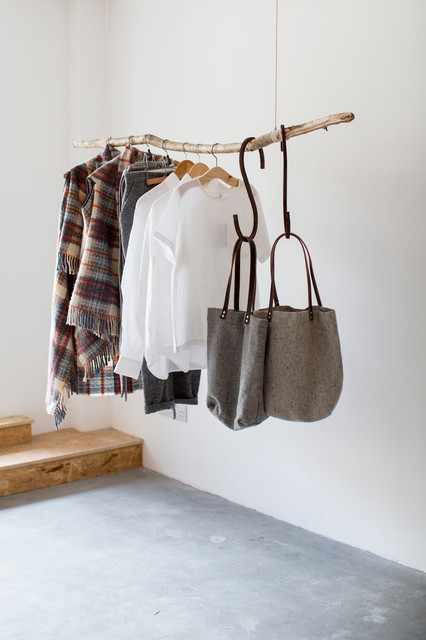


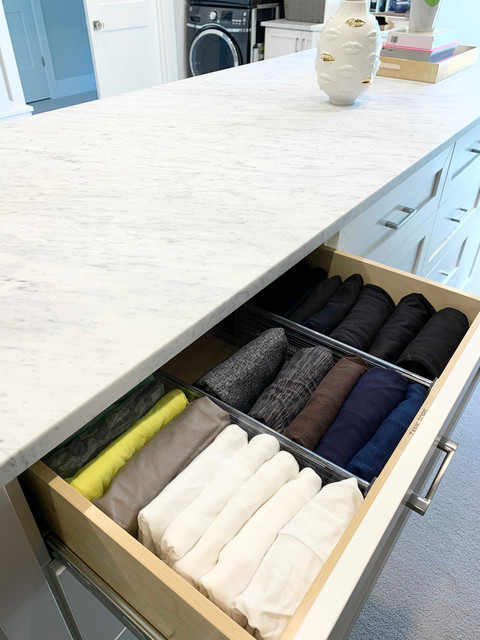
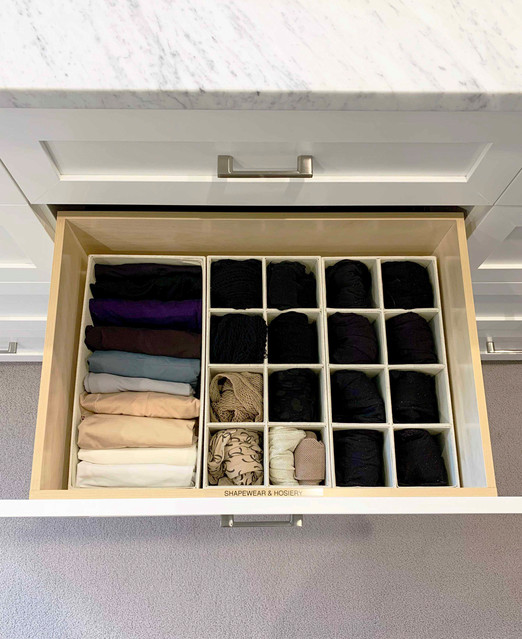
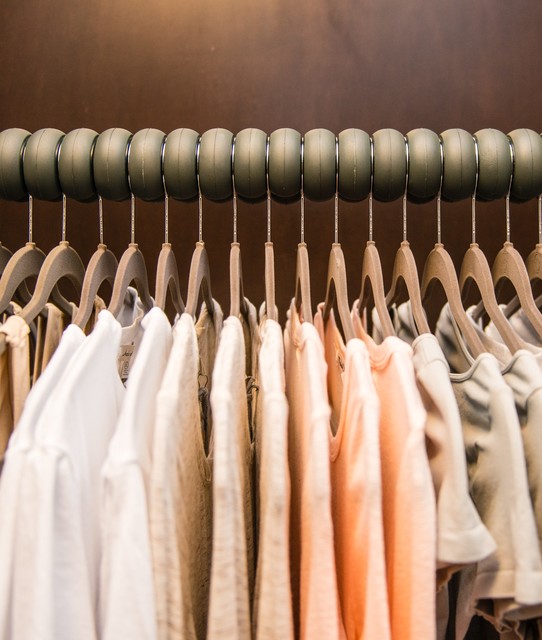
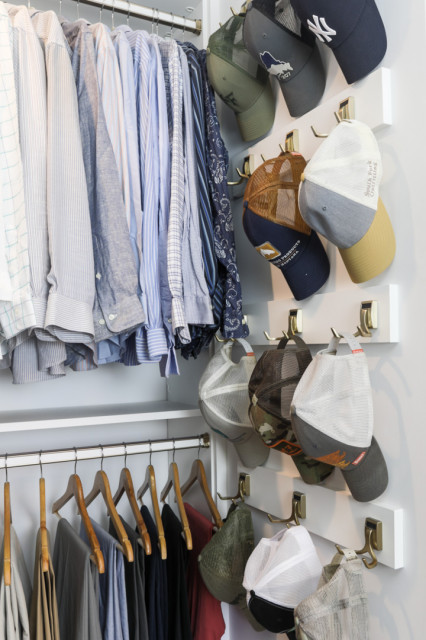

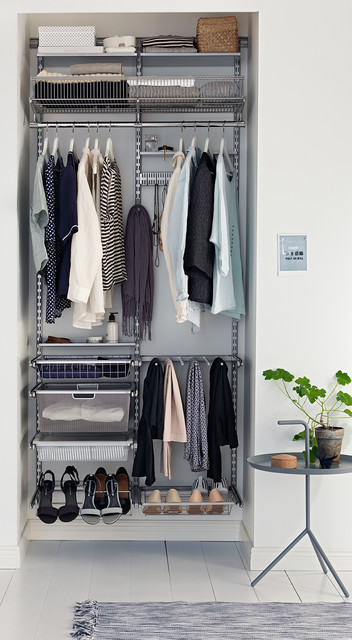


Comments
Post a Comment